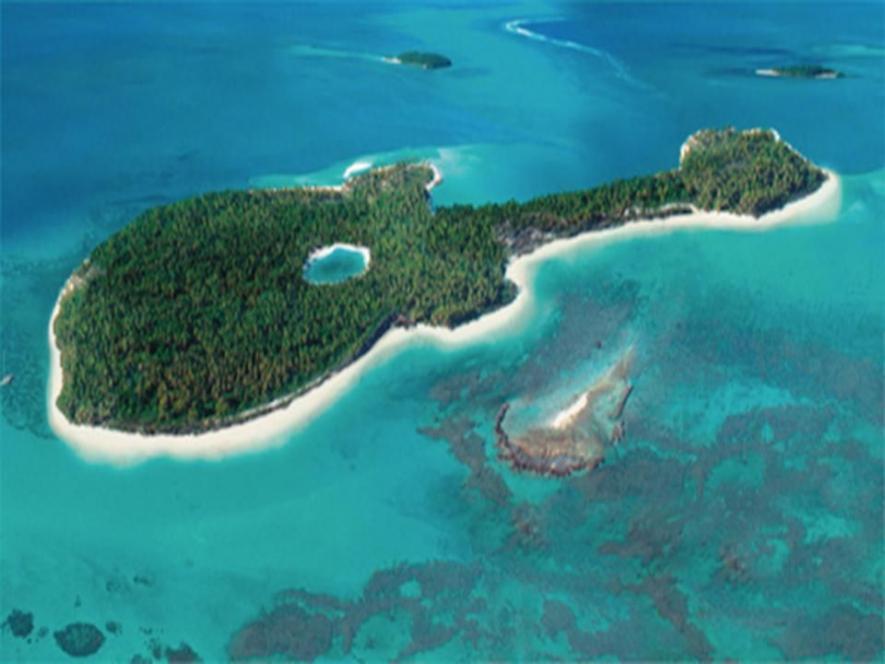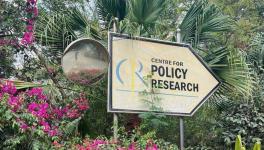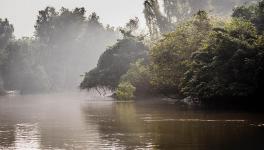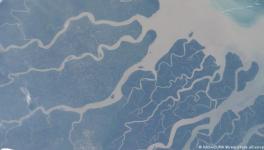Nicobar ‘Development’ Project: Coastal Land for Indigenous Population on the Line

Image Courtesy: Pinterest
New Delhi: Amid the raging pandemic, NITI Aayog -- the public policy think-tank of the Central government—has brought in a proposal, termed ‘shocking’ by environmentalists, for the development of India’s southernmost and largest islands--the great Nicobar region.
On the government agenda is the creation of a mega transhipment terminal, an airport, a township and large-scale development of gas and solar-based power.
While the government claims that the project will lead to promotion of tourism, resulting in economic development of the region, concerns over the scale and the speed of expansion of the project have come forth since its initial announcement in March this year.
Read Also: Why Govt’s Plan to ‘Develop’ Andaman Island is Shocking
With the proposed projects spanning 166 sq km, largely through coastal systems and forests, costing over ₹75,000 crore, the most serious concerns flagged through expert panels include the loss of tribal land and the extinction of protected species. Several RTI’s (Right to Information appeals) have been filed to understand the full scale of the expansion of the project as much remains undisclosed and revealed only through media reports.
Environment website Mongabay reports that there are proposals for denotification of tribal reserves in pursuance of the NITI Aayog’s vision plans. Held on February 4, the most recent meeting of the government committee reportedly agreed to denotify about 6 sq km of the tribal reserved land on Little Andaman. No formal communication or minutes of the meeting are yet available in the public domain.
The future of the hunter-gatherer Shompen tribe along with many others is on the line as the project in its ambit mentions the key foraging grounds for the community, say environmental activists.
Pankaj Sekhsaria, who has been researching issues of the Andaman and Nicobar Islands for over two decades, has pointed out threats to Galathea Bay, which is an iconic nesting site in India of the enigmatic Giant Leatherback, the world’s largest marine turtle.
The projects could also have a devastating impact on the critically endangered Nicobar shrew, the Great Nicobar crake, the Nicobar frog, the Nicobar cat snake, among others.
Sekhksaria argues: “In its meeting on January 5, 2021, the Standing Committee of the National Board for Wildlife (NBWL) denotified the entire Galathea Bay Wildlife Sanctuary to allow for the port there this as India's National Marine Turtle Action had listed Galathea Bay as one of the ‘Important Coastal and Marine Biodiversity Areas’ and ‘Important Marine Turtle Habitats’ in the country.
Activists allege some of these projects are largely unviable and are aimed at grabbing land and obtaining clearances for large scale projects in critical and environmentally sensitive zones.
Speaking with NewsClick, Manju Menon, senior fellow at the Centre for Policy Research, said: “What is being shown as a single project is a massive complex of several large projects that will monopolise the island of Great Nicobar. Most of the island's biodiversity and natural resources until now were protected by National Parks and local scale land uses”
With the current details of the project, it is likely to spread across 18% of the 910 sq. km. island, and will cover nearly a quarter of its coastline. Moreover, 6.5 lakh people are envisaged to finally inhabit the island when the present population is only 8,500, the impacts of loss of culture, indigenous practice and language has not yet found any space in the government’s ambitious vision documents.
Menon adds: “This huge port complex proposes to utilise most of the coastal land available for local habitation and squeeze in the community uses and indigenous peoples living on the island into smaller territories. This is a re-reservation of the islanders to benefit the government and private proponents of the port. "
There are no concrete details available for the loss of tree cover also, and experts fear that the number of trees to be felled for the massive projects could run into millions. Mangroves in the pristine patch are particularly facing a greater threat due to the creation of expansive aerodromes in the region.
The government has proposed four locations for the upcoming water aerodromes are Havelock Island, Long Island, Port Blair and Neil Island. These aerodromes will have seaplanes connecting the destinations to various cities in a bid to model the zone into a tourist destination of International standards.
The Hindustan Times reported that the Environmental Appraisal Committee (EAC) noted that the “aerodrome will involve the loss of 3,500 sq m of forest land which has been transferred to Andaman and Nicobar Islands Integrated Development Corporation Ltd (ANIIDCO). As per the environmental impact assessment (EIA) report, the project site for the construction of the terminal building (1568.9 sq m) and associated infrastructure (453.3 sq m) falls partly in a large patch of mangroves. The speedboat pathway is dominated by mangroves on both sides. The government does not address the impact on the mangroves due to the project.”
Get the latest reports & analysis with people's perspective on Protests, movements & deep analytical videos, discussions of the current affairs in your Telegram app. Subscribe to NewsClick's Telegram channel & get Real-Time updates on stories, as they get published on our website.
























